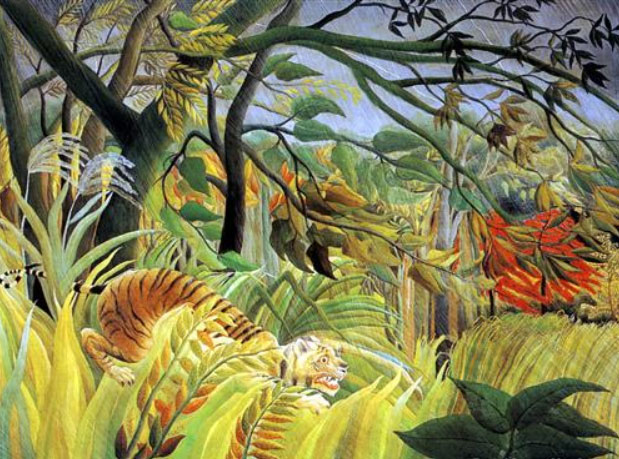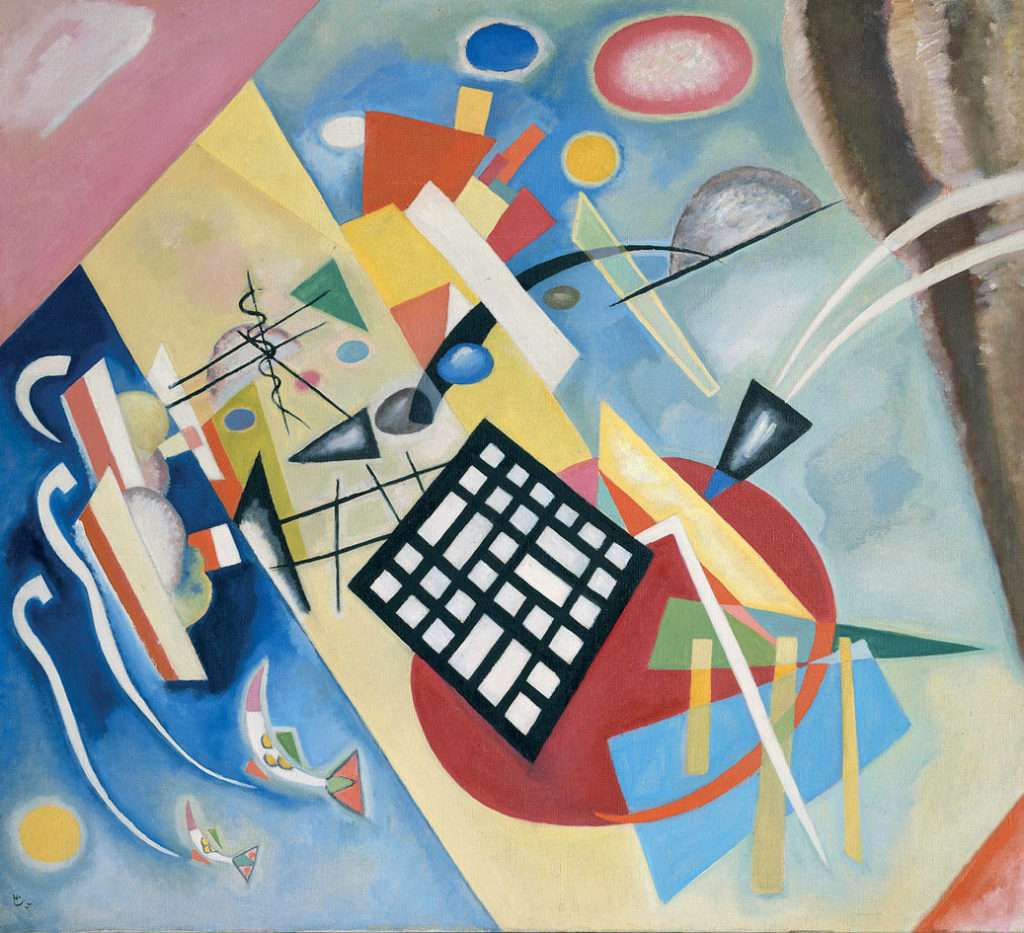Let’s look at some famous artists who took different paths at first but eventually reclaimed their artistic passion and attained their fullest creative potential. They may have taken detours or encountered stormy weather, however, like the tiger in Rousseau’s painting above, they eventually took the leap to claim their destiny.

Emily Carr – Renewed Vitality
Emily Carr (1879-1945) is considered a National Heroine in Canada. She shows us that aspirations can be re-ignited anytime and anywhere. She felt the urge to paint at an early age, however, her artistic development was halted by ill health and the need to accept other work to earn a living. Discouraged by years of neglect, she had almost ceased to paint altogether until when she was 56 years old she saw the work of the Group of Seven, in Toronto. The story goes, she was so captivated upon seeing their art work that from then on she worked with renewed energy and deepened spirituality.
Carr painted expressionist landscapes and gained creative insight from her connection with nature. She once stated, “Oh, Spring! I want to go out and feel you and get inspiration. My old things seem dead. I want fresh contacts, more vital searching.”
Henri Rousseau – Art After Retirement
Henri Rousseau was a self-taught Sunday painter whose job was working as a customs collector at a toll station. He began to paint more intensely when he was 40 years old. The artist took the leap and retired at the age of 49 on a small pension in order to pursue his dream of becoming a full-time artist. He tried to supplement his pension by giving violin and painting lessons and by making portraits on commission. He also earned some extra money as a street musician.
Finally, when he was able to paint every day, he exclaimed, “When I go out into the countryside and see the sun and the green and everything flowering, I say to myself, Yes indeed, all that belongs to me!”
Agnes Martin – From Teaching to Museum Shows
Agnes Martin, a Canadian-born American painter, once stated, “There are so many people who don’t know what they want. And I think that, in this world, that’s the only thing you have to know — exactly what you want. … Doing what you were born to do … That’s the way to be happy.”
In the late 1930’s and the 1940’s, Martin taught in public schools. At the age of 43 her life completely changed when she had her first solo exhibition at the Betty Parsons Gallery in New York, NY. That led to her major retrospective at the Institute of Contemporary Art in Philadelphia, PA. Other major exhibitions have been held at the Pace Gallery in New York, the Stedelijk Museum in Amsterdam, and the Whitney Museum of American Art in New York. She wrote about life and art in Writings, her book that includes her poetry and thoughts. Imagine if she had not known what she was “born to do.”
Wassily Kandinsky – “A Late Bloomer”

Considered to be the father of abstract art, Wassily Kandinsky was what might be considered “a late bloomer” concerning his art. Born to a family of musicians, he learned to play the piano and cello. When he was 20 years old he chose to study law and economics and attended the University of Moscow where he lectured and also wrote about spirituality. At the age of 30, Kandinsky left Moscow and went to Munich to study life-drawing, sketching and anatomy. At the age of 37 (which was at one time considered “middle aged”) he had his first exhibition. The artist’s unrelenting quest for new forms fueled his passion for painting almost until his death in 1944, at the age of 78.
Kandinsky once remarked, “The spirit, like the body, can be strengthened and developed by frequent exercise. Just as the body, if neglected, grows weaker and finally impotent, so the spirit perishes if untended.”
As these artists remind us, it is important to follow our hearts, know what we are born to do, and nourish our creative spirit. Even when we encounter periods of withdrawal we must find the way to reclaim it.

I have been a successful artist before the recession. Now an elementary public art teacher. I haven’t sold a piece of my art in a few years now. I wonder when I will have the drive again to create with the passion I used to have. This article was very comforting. I dream of the day I take myself outdoors again to paint!!!
Dear Theresa, I’m glad you enjoyed reading this article. Thank you for serving in a very inspirational profession as an art school teacher. I can imagine the many lucky children in your class whose lives you change as you share your love of art and as you teach them to use art as a tool for self-expression, problem solving, and healing. Did you read the articles on this website about the importance of art in education? There are several! You’ll find some here: https://www.healing-power-of-art.org/?s=education
As far as regaining your passion to create art the way you once did, instead of thinking back in time, enjoy the present time and seek new passions for creating art! When you go outdoors let nature speak to you, coax you… enjoy the wonderment… I hope you will soon be picking up the paint and easel for yourself without any other concerns, self-judgment, or objectives. Allow yourself to be your own teacher and enjoy the process of self-expression and healing.
All the best to you,
Renee